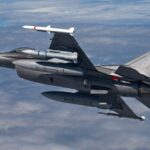
The Air Force’s top acquisition official on Tuesday detailed the service’s new plan to rapidly produce advanced aircraft within five years using digital engineering strategies, emphasizing his goal to prioritize design over sustainment for future platforms. Will Roper, the Air Force’s service acquisition executive, told attendees at a Center for New American Security event the new Digital Century Series initiative will look to improve integration of emerging technologies by buying smaller quantities of new fighter jets, potentially from multiple companies…

 By
By 











